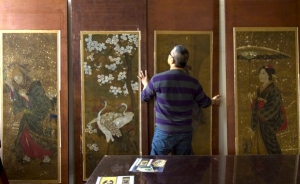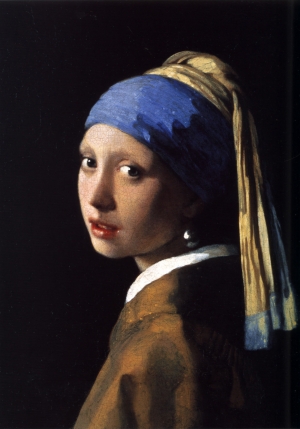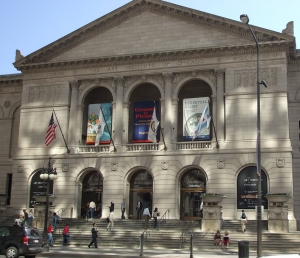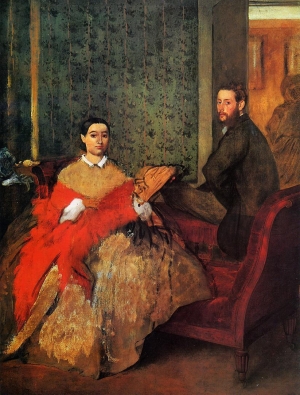|
Displaying items by tag: japan

Six 140-year-old Japanese silk paintings by Utagawa Kunitsuru have undergone major restoration thanks to Washington, D.C.-based conservator, Yoshi Nishio. The paintings, which measure about 6 feet tall and 21 ½ feet wide, were previously hung in the Decatur House, a historic home and functioning museum, which serves as the National Center for White House History. The Decatur House is located across Lafayette Square from the White House and was designated a U.S. National Historic Landmark in 1976.
The paintings are believed to have been created in 1873 during a time of rich cultural exchange between Japan and the United States. The leading theory suggests that President Ulysses S. Grant acquired the works when he visited Japan in 1879 as part of a world tour. Only one of the six paintings is signed and dated.
The works have hung in the Decatur House for over a century and years of smoke, sunlight, and moisture had left the paintings wrinkled and darkened. Nishio, who received the paintings last year, spent hours cleaning the works with water, solvents, cotton swabs, and bamboo brushes with sable bristles. He worked on particularly delicate portions of the paintings with a scalpel under magnification. The paintings also had to be immersed in water to separate them from the boards they had been glued to.
The paintings, which feature a geisha, a robed samurai, white cranes, cherry blossoms, and a long-tailed rooster, are expected to return to the Decatur House in June 2013.

Mary Griggs Burke, who built the most comprehensive collection of Japanese art outside of Japan, passed away on December 8, 2012 at her home in Manhattan. She was 96.
Burke’s collection, which she amassed over fifty years, featured thousands of artifacts including paintings, prints, sculpture, textiles, lacquerware, ceramics, and calligraphy. Worth tens of millions of dollars, her meticulously assembled collection spans five millenniums and includes early pieces from around 3000 B.C. to works of the 19th century A.D.
Burke was born in St. Paul, Minnesota in 1916, where she grew up in a Victorian mansion adorned with 18th century French objets d’art as well as a few important Japanese artifacts. After earning a bachelor’s degree in 1938 from Sarah Lawrence College and a master’s in clinical psychology from Columbia, Burke traveled to Japan in 1954. Japanese-influenced Bauhaus architect, Walter Gropius, who was designing a house for Burke, suggested the visit. Burke immediately fell in love with Japan and its art and returned to the country dozens of times throughout her life.
Burke began avidly collecting Japanese art in 1963. Her holdings eventually grew so vast that they required their own residence. Burke purchased the apartment adjacent to her own on the Upper East Side of Manhattan to house her collection; she also employed a curatorial staff and encouraged students and scholars to visit. In 2006, Burke announced that after her death her collection would be divided between the Metropolitan Museum of Art in New York and the Minneapolis Institute of Art. Burke served on the boards of many institutions, including the Met. At the time of her death she was an emeritus trustee of the museum.

Considered one of Dutch painter Johannes Vermeer’s (1632-1675) masterworks, Girl With a Pearl Earring has spent over a century at the Royal Picture Gallery Mauritshuis in The Hague. Sometimes referred to as the “Dutch Mona Lisa,” the painting, which is not dated, features a wide-eyed young girl whose gaze has been captivating audiences for hundreds of years.
Girl With a Pearl Earring is one of 15 paintings heading to the Frick Collection in New York from the Netherlands. Vermeer, Rembrandt and Hals: Masterpieces of Dutch Painting From the Mauritshuis opens on October 22, 2013 and runs through January 19, 2014. Because of the high level of interest in the enigmatic work, chief curator at the Frick, Colin Bailey, decided to give Girl With a Pearl Earring its own space in the museum’s Oval Room. The rest of the exhibition will be on display in the Frick’s East Gallery.
The Mauritshuis is currently undergoing renovations, which is why part of its collection has been sent out for exhibition. In addition to the Frick, the works will appear in Japan (through January 6, 2013), San Francisco’s de Young Museum (January 26, 2013-June 2, 2013), and Atlanta’s High Museum of Art (June 22, 2013-September 29, 2013). The rest of the Mauritshuis’ collection will remain in the Netherlands and will be exhibited at The Hague’s Gemeentemuseum until the renovations are completed.

The latest update to Google’s browser-based map service allows visitors to navigate museums across the world with their smartphones. While sprawling institutions made up of various wings and galleries can appear cumbersome, Google hopes to alleviate confusion by making virtual floor plans for dozens of museums and libraries in nine countries available to users.
The recent update includes interior views of shopping malls, airports, train stations, and convention centers, but the presence of museum layouts is particularly welcomed. While 30 museums in the United States are currently mapped out, museums that are not already included can upload their own floor plans if they wish to be included in the project.
Maps of the American Museum of Natural History in New York, the Art Institute in Chicago, the Freer Gallery of Art in Washington, the British Museum in London, the National Museum of Denmark in Copenhagen, and the National Museum of Emerging Science and Innovation in Japan are currently available.

Patrons who are familiar with the permanent collection at Boston’s Museum of Fine Arts might become befuddled upon their next visit to the institution. Some of the museum’s finest works including Pierre-Auguste Renoir’s Dance at Bougival, the pivotal Claude Monet painting, La Japonaise: Camille Monet in a Japanese Costume, five works by Paul Cézanne, five more by Edouard Manet, and two of the masterpieces by Vincent Van Gogh are nowhere to be found.
While some of the works have been lent to museums in the United States, Japan, and Europe to enhance exhibitions, others have been rented to for-profit organizations. Loans between institutions are common practice, but compounded with the large number of works currently out on rent by the MFA, the museum’s own collection appears to be lacking. Currently, 26 of the MFA’s paintings are involved in exhibitions in Italy, which the institution received a hefty yet undisclosed fee for. Some of the works now on view in Italy are two paintings by John Singleton Copley and two Rembrandt portraits as well as single works by Eugène Delacroix, Paolo Veronese, Winslow Homer, John Singer Sargent, Paul Gauguin, Alberto Giacometti, and Pablo Picasso.
While the MFA is excited to be raising revenues, the act of charging fees for lending works has been a source of controversy. One of the main duties of public institutions, including art museums, is to share their collections with the public. Many objectors find the practice of lending works for profit to be in direct opposition to this goal.
Other major holdings that are not presently at the MFA are Diego Velázquez’s Luis de Gongora, two works by El Greco, two more by Gustave Courbet, the museum’s only painting by Edvard Munch, and arguably its greatest work by Edgar Degas, Edmondo and Therese Morbilli. While MFA officials argue that they are bolstering the museum’s international reputation, critics feel the institution is suffering for it.
|
|
|
|
|